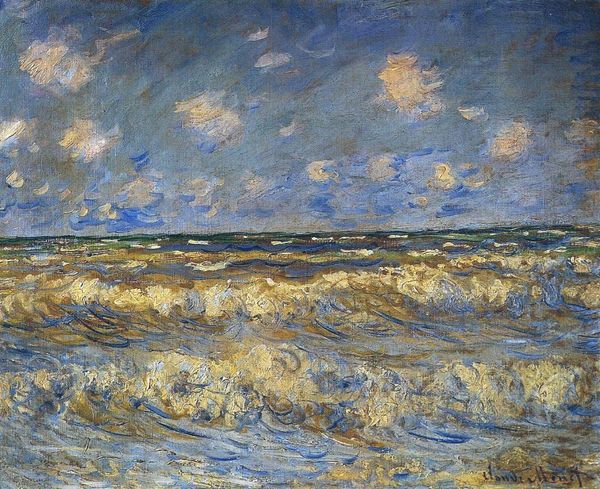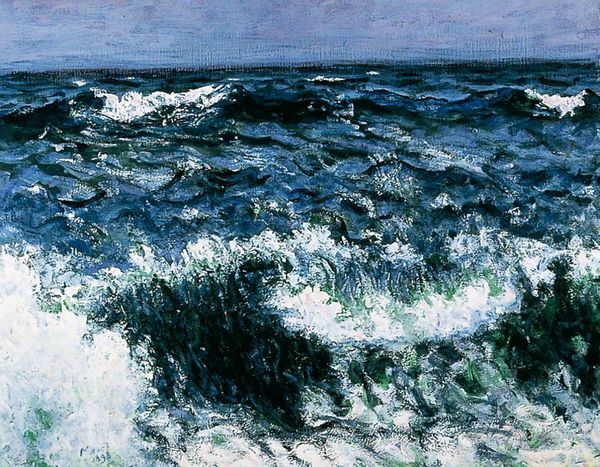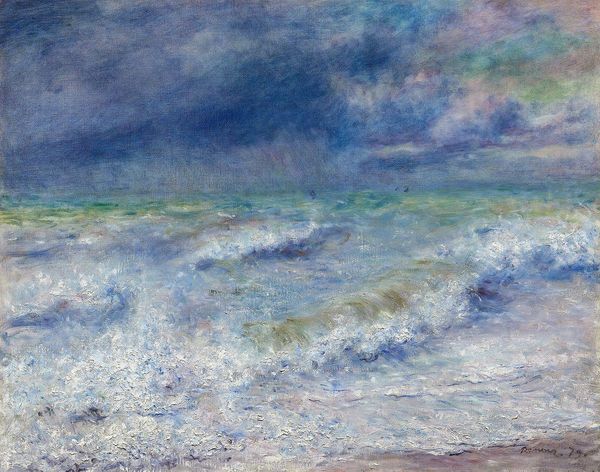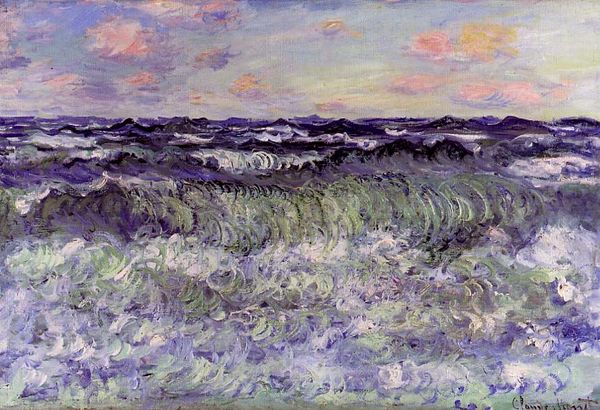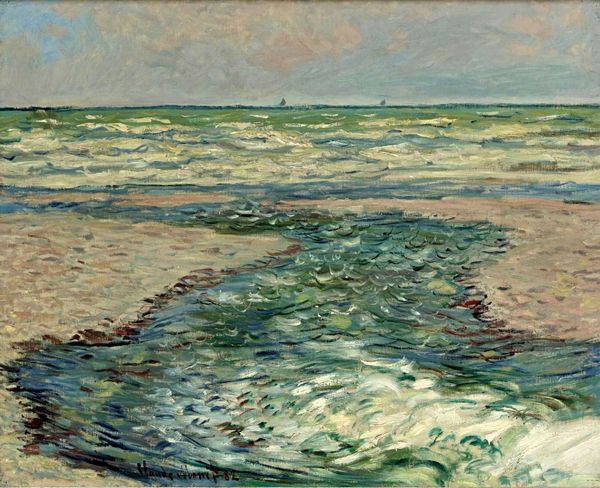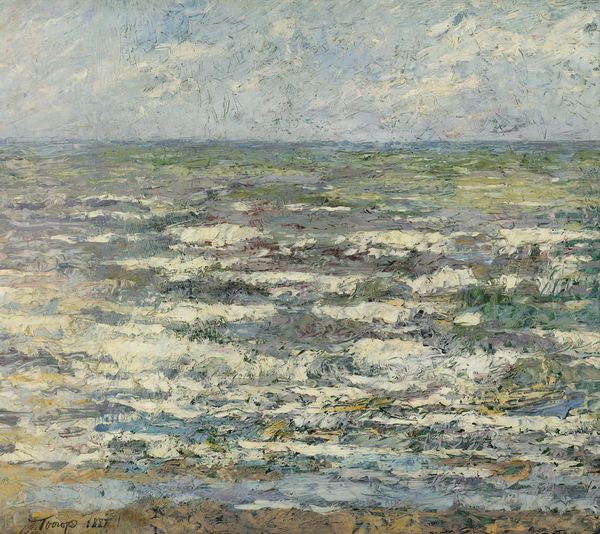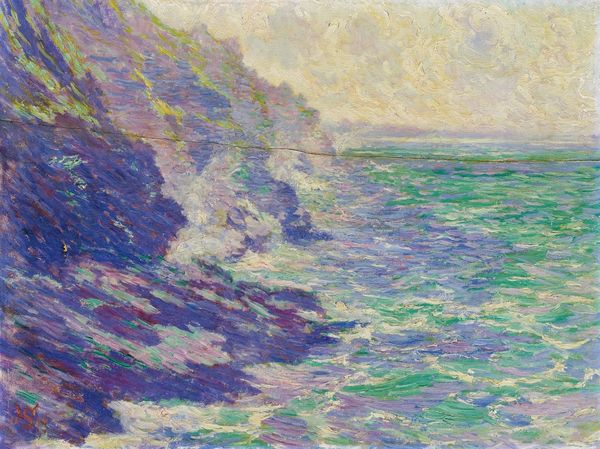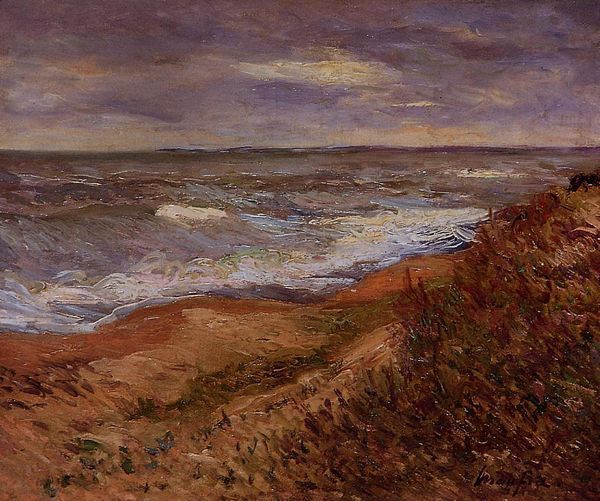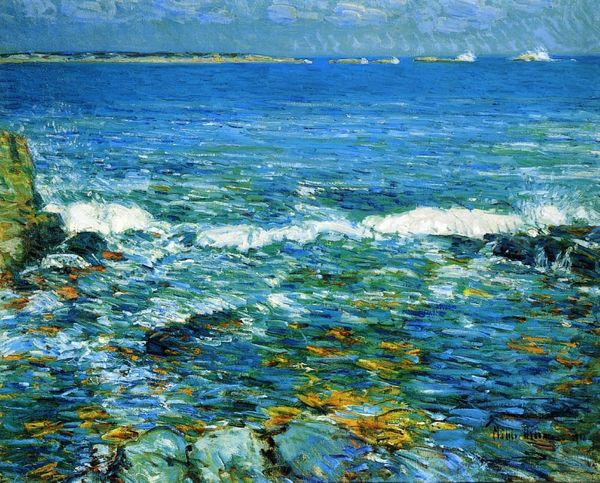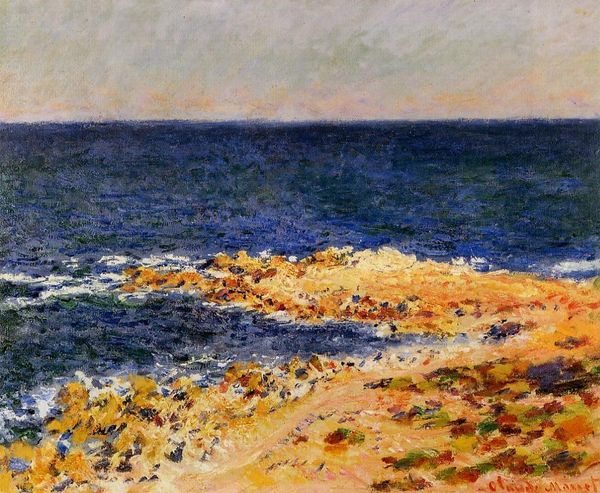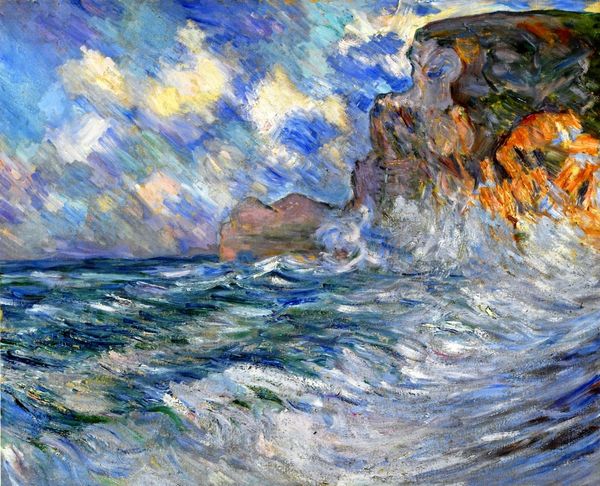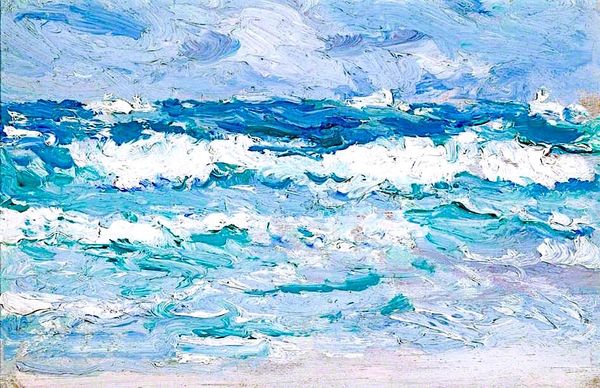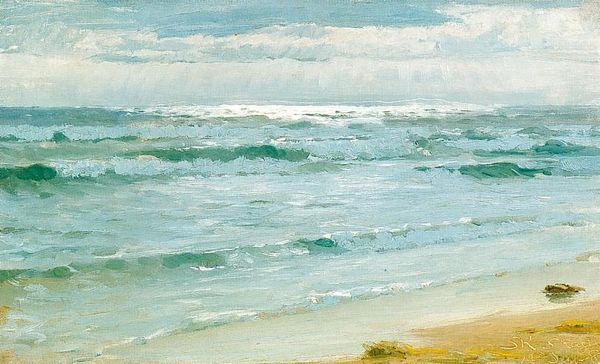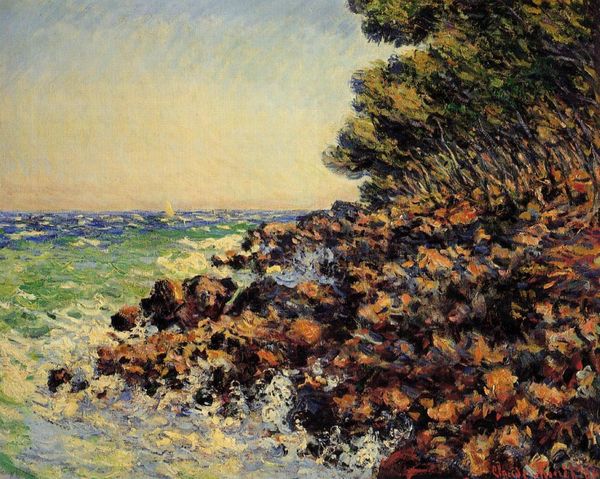
Copyright: Public domain
Here, Claude Monet captures the waves breaking, utilizing the canvas and oil paints to emulate the water. Note how the waves, traditionally symbols of untamed nature, become a study in the transient moment. This echoes motifs found in ancient mythologies, where the sea, a powerful, often chaotic god, holds both promise and peril. Consider the association of waves with the destructive yet purifying forces of nature, similar to the fire motifs in Heraclitus's philosophy. Monet's waves surge and crest, bearing a resemblance to Hokusai's Great Wave, albeit abstracted and impressionistic. Both artists capture not just the form of water, but its felt experience. This act—transforming the natural world into art—engages our collective memory. The waves’ rhythmic crash speaks to something primal within us, a reminder of the ceaseless change and renewal inherent in life. The water is thus a symbol, emotionally engaging us on a deep, subconscious level. In this non-linear progression, the symbol resurfaces, evolves, and takes on new meanings.
Comments
No comments
Be the first to comment and join the conversation on the ultimate creative platform.
